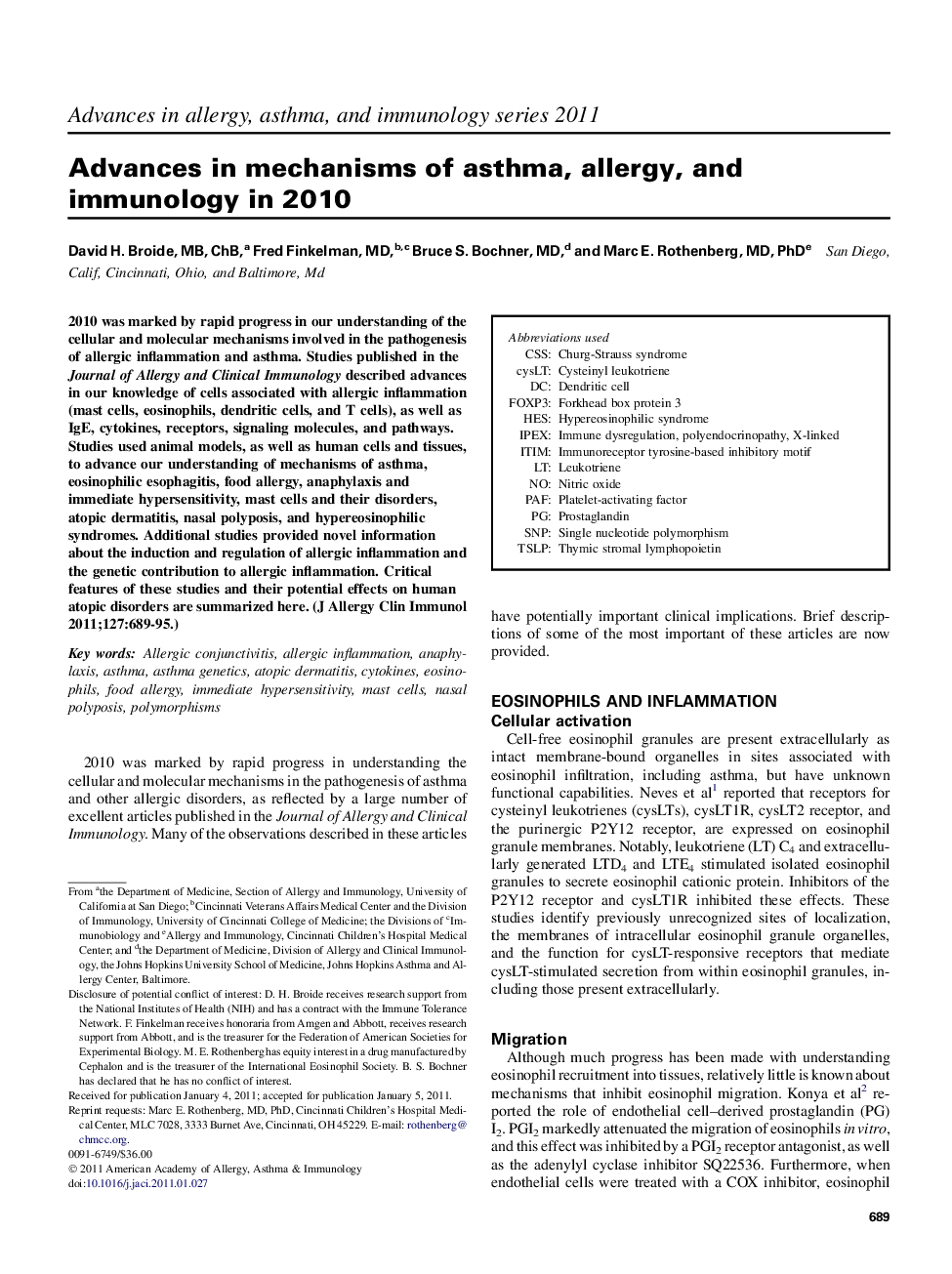| Article ID | Journal | Published Year | Pages | File Type |
|---|---|---|---|---|
| 6067078 | Journal of Allergy and Clinical Immunology | 2011 | 7 Pages |
Abstract
2010 was marked by rapid progress in our understanding of the cellular and molecular mechanisms involved in the pathogenesis of allergic inflammation and asthma. Studies published in the Journal of Allergy and Clinical Immunology described advances in our knowledge of cells associated with allergic inflammation (mast cells, eosinophils, dendritic cells, and T cells), as well as IgE, cytokines, receptors, signaling molecules, and pathways. Studies used animal models, as well as human cells and tissues, to advance our understanding of mechanisms of asthma, eosinophilic esophagitis, food allergy, anaphylaxis and immediate hypersensitivity, mast cells and their disorders, atopic dermatitis, nasal polyposis, and hypereosinophilic syndromes. Additional studies provided novel information about the induction and regulation of allergic inflammation and the genetic contribution to allergic inflammation. Critical features of these studies and their potential effects on human atopic disorders are summarized here.
Keywords
Cysteinyl leukotrieneCysLTIPEXFOXP3TSLPITIMCSSAsthmaFood allergyallergic conjunctivitisAnaphylaxisEosinophilsAllergic inflammationHESImmediate hypersensitivityAtopic dermatitisDendritic cellChurg-Strauss syndromeHypereosinophilic syndromeCytokinesPlatelet-activating factorThymic stromal lymphopoietinLeukotrieneMast cellsImmunoreceptor tyrosine-based inhibitory motifNitric oxidePAFforkhead box protein 3prostaglandinPolymorphismsSingle nucleotide polymorphismNasal polyposisSNPasthma genetics
Related Topics
Life Sciences
Immunology and Microbiology
Immunology
Authors
David H. MB, ChB, Fred MD, Bruce S. MD, Marc E. MD, PhD,
